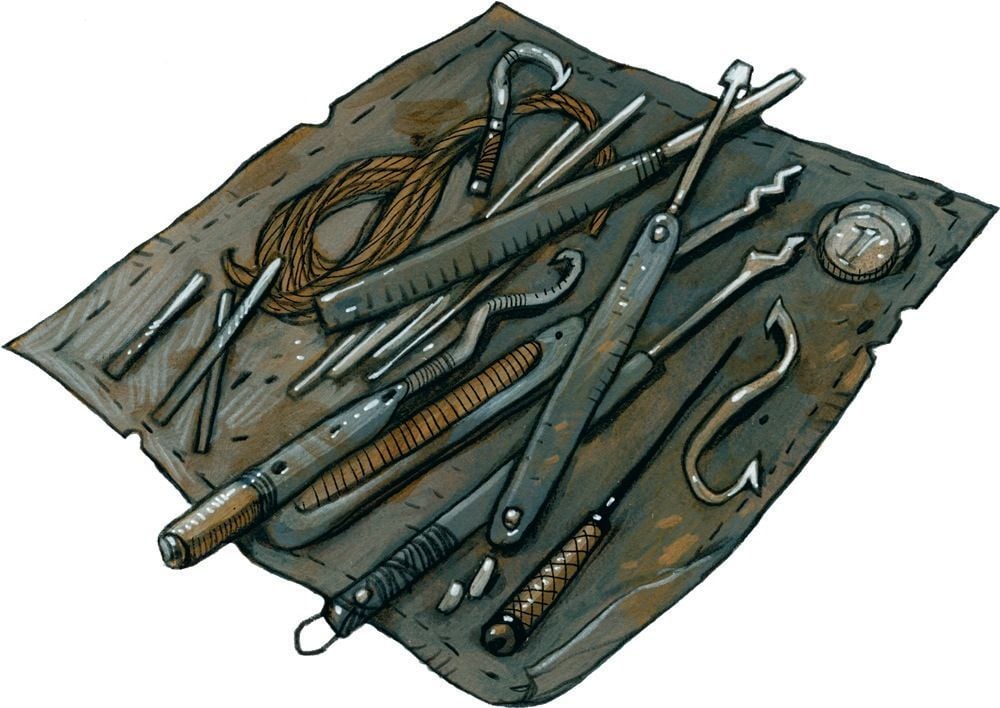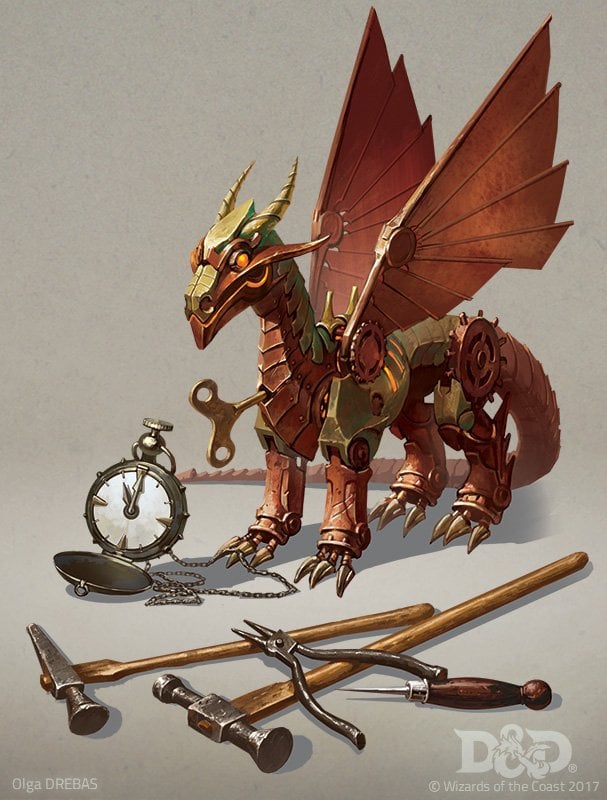D&D: Five Ways To Be The Best Artificer

Artificers are the newest class in D&D. Looming large in Tasha’s Cauldron with some changes, here are five tricks to make any Artificer an artisan.
Success as an Artificer comes down to finding the right tools and trinkets for the right jobs. Whether your job happens to be providing healing magic or creating an eldritch arcane turret that can walk around on bird legs while shooting magical lasers at your opponents. They’re one of the more unique classes to grace D&D 5th Edition, blending magic and technology in one. They are spellcasters, but they need tools to cast their spells.
This is because what an artificer is really doing when they cast a spell is creating a magitech device that channels the right amount of energy, or accomplishes the effect of the spell–and it’s definitely magic, and definitely follows the rules of a spell, but you’re using your tools to calibrate your magitech pistol before unleashing a ray of frost, or to activate the runes/gems engraved in your magitech armor that gather the elemental air energy that bears you aloft when you cast fly. But Artificers can do so much more, especially since they are masters of tools.
Here are a few things your Artificer (or anyone) can do with their tools, as expanded on in Xanathar’s Guide to Everything.
Thieves’ Tools
A set of fine tools of various shape and size, including a small file, lock picks, mirrors, pliers, and more. These are meant to handle delicate locks and springs and tumblers. And yet, you can do a few other things with them.
You can set a trap with these tools, as well you can use your tool proficiency to gain advantage when making a History check about locations that might be renowned for deadly traps, or have advantage on Investigation and Perception checks to look for traps because you know what that means.
Tinker’s Tools
These are hand tools like small hammers, needle and thread, whetstones, glue, and other fine tools for working on and repairing a variety of objects. These tools give you advantage on certain History and Investigation checks, as well as allowing you to repair a damaged object on your offtime. Or, if need be, improvise a temporary item using scraps.
Alchemist’s Supplies
These are glass beakers and stirring rods, metal frames, and common ingredients like salt, powdered iron, and purified water. They allow you to craft things like acid, alchemist’s fire, antitoxin, oil, perfume, or soap during a long rest, as well as create minor effects like a puff of thick smoke, identify a poison or substance, start a fire, or neutralize acid.
Smith’s Tools
Like the Tinker’s tools, Smith’s tools allow you to repair hit points to damaged metal objects. As you might expect, smith’s tools are typically hammers and tongs and charcoal and rags and other things needed for the care and feeding of weapons and armor. In addition to repairing, they also grant you advantage on checks involving learning about metal objects like weapons and armor, or in a pinch they can be used to sunder a nonmagical metal object.
Woodcarver’s Tools
Finally, we come to Woodcarver’s tools, which allow you to craft and carve intricate wooden objects. You might use a knife and a gouge, or a small saw and a chisel. Your expertise with wooden objects means you’re at advantage when examining wooden objects like figurines or arrows, or when leaning on your knowledge of trees.
As with the Smith’s and Tinker’s tools, you can repair damaged wooden objects, or even craft arrows as a part of a short or long rest.
Happy Adventuring!











